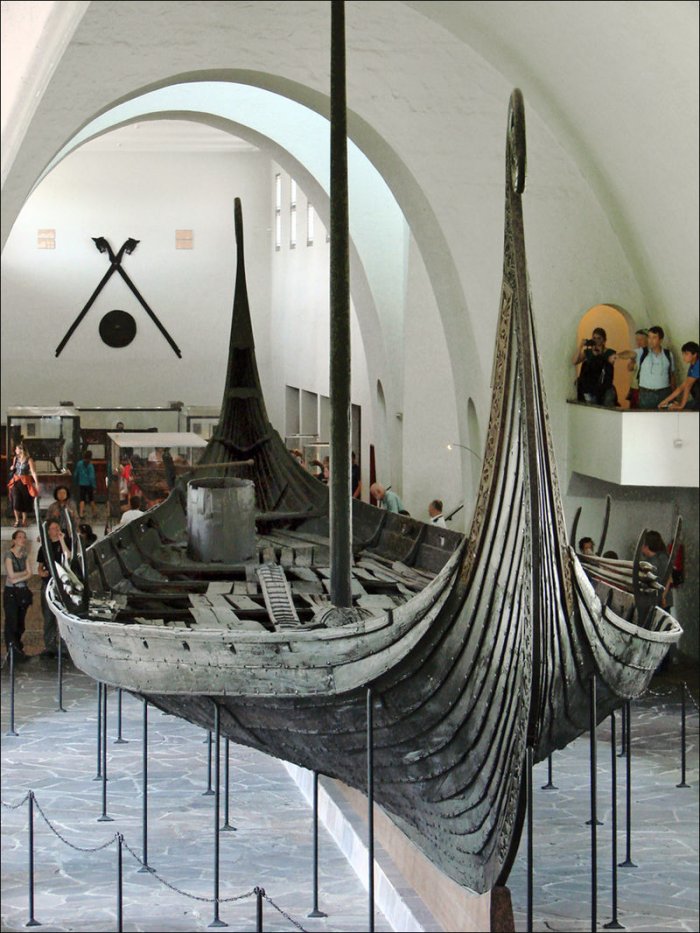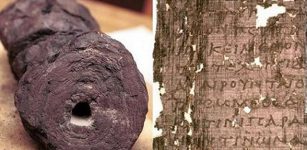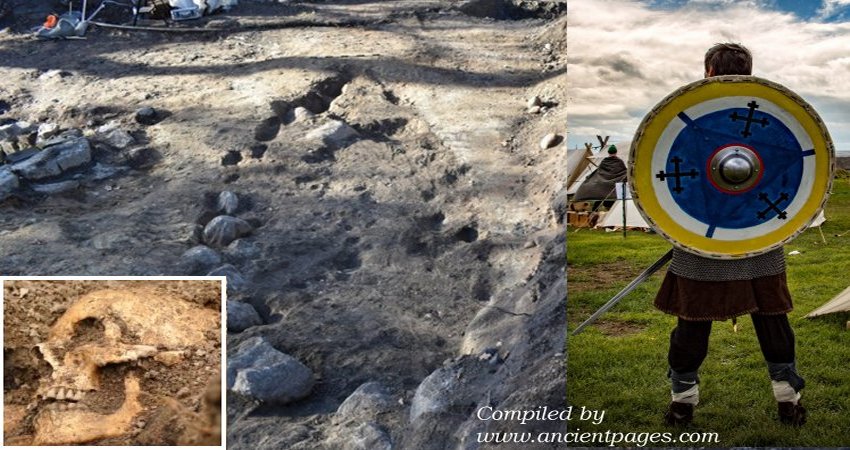Oseberg Ship: Astonishingly Well-Preserved Viking Burial Ship
MessageToEagle.com – The Vikings’ ships were the greatest technical and artistic achievement of the European Dark Ages. Without these great ships the Viking Age would never had happened and the success of the Vikings would never have been as far-stretched.
Unfortunately, very few remains of Viking ships have been discovered. One Viking ship that can provide us with information about Viking burial customs, traditions, importance of certain artifacts as well as Viking technology is the Oseberg Ship that was discovered at Oseberg, Norway in 1904 by Knut Rom, a local farmer.
The Oseberg Ship is an astonishingly well-preserved Viking ship. It has been labeled as one of the finest finds of the Viking Age.
It was unearthed in a very damp burial mound which is the reason why the ship survived almost intact. The excavation of the Oseberg ship was led by Professor Gabriel Gustafson of the University’s Collection of National Antiquities in Oslo. Naturally, a remarkable discovery like this one drew great interest from the public. It became necessary to secure the dig with a fence, signs and a guard to ensure that nobody disturbed the work or got too close to the remains.

The excavation itself took less than three months, but it took 21 years to prepare and restore the ship and most of the finds. The ship was dried out very slowly before being put together.
See also:
Mystery Of The Brave Viking Chief Buried On The Gokstad Ship
Viking Longships: Fearless Dragonships Daring The Oceans And Seas
Dragon’s Head – One Of The Most Famous Viking Symbols Discovered At Birka Ancient Excavation Site
Explore The Mysterious Ancient World Of The Vikings
The Oseberg Viking ship measured 21.40m long by 5.10m wide. It was constructed primarily out of oak planks and the vessel’s bow and stern were covered in elaborate carvings, while it contained 15 pairs of oar holes which meant up to 30 men could row the ship as required.

Photo: Museum of Cultural History (Photographer: Væring)
The Oseberg ship was used as a burial ship for two Viking women who died in 834. A burial chamber was dug right behind the ship’s mast. Inside, the walls were decorated with fantastic woven tapestries and the dead women lay on a raised bed.
The women had a number of burial gifts with them. There were personal items such as clothes, shoes and combs, ship’s equipment, kitchen equipment, farm equipment, three ornate sledges and a working sledge, a wagon, five carved animal heads, five beds and two tents. There were fifteen horses, six dogs and two small cows.

Investigation of the skeletons showed that the older woman was about 70 to 80 when she died, probably of cancer. The other woman was younger, a little over 50. We do not know what she died of.
The identity of the two women remains a mystery. Some have speculated that one of the women may be Queen Åsa, the grandmother of Norway’s first king, although this remains unproven.
To have received a prominent burial like this one, clearly suggest they must have held a special position in the community.

Were they political or religious leaders? Who was the most prominent person in the grave? Was one a sacrifice, to accompany the other into the kingdom of the dead? Were they related? Where did they come from? These are questions we cannot answer.

For whoever built the Oseberg ship, it must have been very important to make it a particularly handsome vessel. He or she used great resources in having the ship decorated. Beautiful animal ornamentation has been carved from the keel, down below the waterline, and up along the bow post, which ends in a snake’s head of twisting spiral. Such a richly decorated ship must surely have been reserved for special members of the aristocracy.

The grave was disturbed in antiquity and any precious metals that may have been present were stolen, but there were still other ancient treasures left.

Several remarkable artifacts were found such as for example the famous Oseburg ‘Buddha’ who was sitting in the lotus position. The bucket is made from yew wood, held together with brass strips, and the handle is attached to two anthropomorphic figures compared to depictions of the Buddha in the lotus posture, although any connection is most uncertain. More relevant is the connection between the patterned enamel torso and similar human figures in the Gospel books of the Insular art of the British Isles, such as the Book of Durrow.

A remarkable collection of wooden and textile artifacts were left behind by the grave robbers. These included four elaborately decorated sleighs, a richly carved four-wheel wooden cart, three beds as well as a number of wooden chests. More mundane items such as agricultural and household tools were also found.
The Oseberg ship and its priceless ancient artifacts are on display at the Viking Ship Museum, Oslo, Norway.
Copyright © MessageToEagle.com All rights reserved. This material may not be published, broadcast, rewritten or redistributed in whole or part without the express written permission of MessageToEagle.com
Expand for referencesReferences:
B. Petersson, Föreställningar om det förflutna: Arkeologi och rekonstruktion










